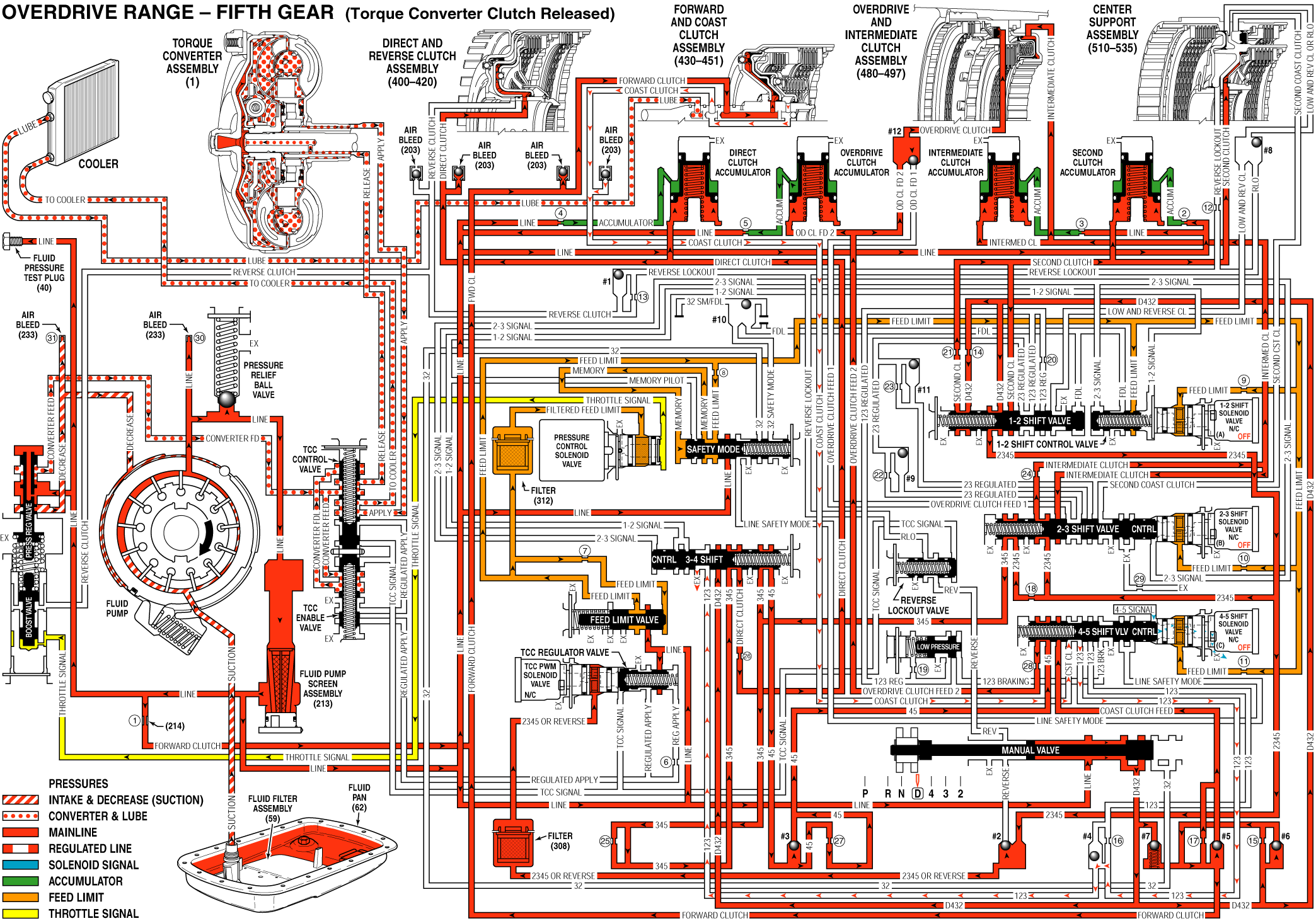Under the most normal driving conditions, it allows the engine to deliver the maximum efficiency and optimal fuel economy in Overdrive Range - Fifth Gear. To shift the transmission to 5th gear, TCM receives input signals from the two speed sensors, TP sensor, and other vehicle sensors to determine the precise moment to de-energize or turn OFF the 4-5 SS valve.
Overdrive Clutch Apply
4-5 SS valve: 4-5 SS valve is de-energized to prevent the feed limit fluid flowing into 4-5 signal fluid passage. 4-5 signal fluid pressure is drained through 4-5 SS valve and the 4-5 shift valve spring (373) tension moves the 4-5 shift valve (374) and the 4-5 shift control valve (375) to the released position.
4-5 Shift Valve: 45 fluid flows into the Overdrive Clutch No. 2 feed circuit through the 4-5 shift valve and the valve bore #28.
#12 Ball Check Valve: Overdrive Clutch No. 2 feed fluid positions the #12 ball check valve against the Overdrive Clutch No. 1 feed circuit and flows into the Overdrive Clutch fluid circuit.
Overdrive Clutch: Then the Overdrive Clutch fluid flows into the Overdrive Clutch piston, and applies the Overdrive Clutch plate to shift to 5th gear.
4-5 Shift Accumulator
Overdrive Clutch Accumulator: Overdrive clutch fluid is also sent to Overdrive clutch accumulator assembly. Overdrive Clutch Fluid with accumulator spring tension to make overdrive clutch accumulator piston overcome accumulator fluid pressure to absorb the impact when overdrive clutch applies.
Coast Clutch Release
Coast Clutch: When the 4-5 shift valve shifts to the released position, the coast clutch feed fluid is prevented, and the coast clutch fluid drains from the valve to make the coast clutch release.
4-5 Shift Valve: The coast clutch fluid flows into 123 circuit through 4-5 shift valve and then drains from 3-4 shift valve.
TCC Release
TCC PWM Solenoid Valve: The filtered 2345 or reverse fluid remain in the TCC PWM solenoid valve. But according to shift pattern, TCM will remain the PWM solenoid OFF to prevent the filtered 2345 or Reverse fluid flowing into TCC signal fluid passage to keep the TCC released.
Overdrive Range, Fifth Gear - Torque Converter Clutch (TCC) Release

